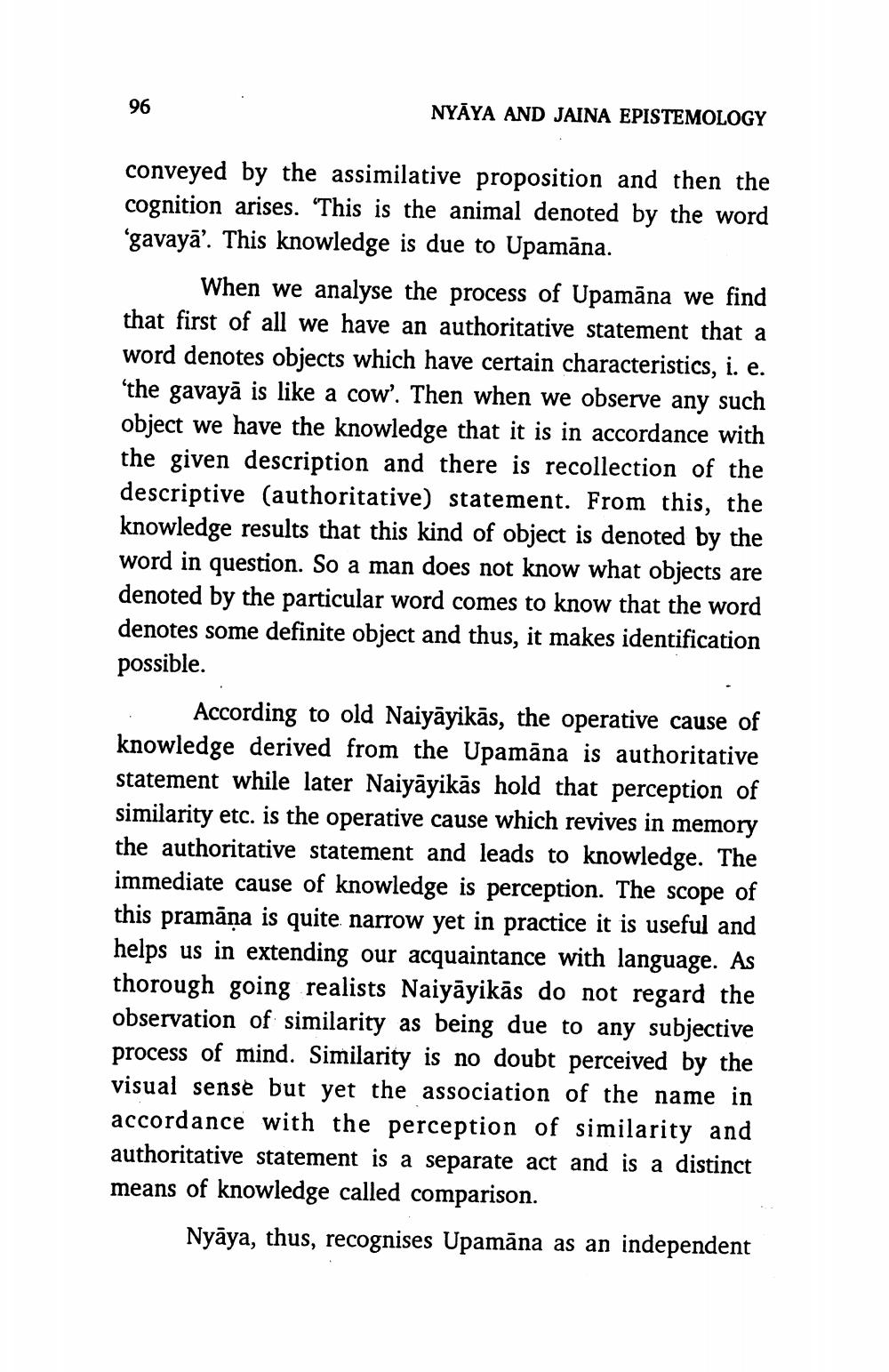________________
96
NYĀYA AND JAINA EPISTEMOLOGY
conveyed by the assimilative proposition and then the cognition arises. “This is the animal denoted by the word 'gavayā’. This knowledge is due to Upamāna.
When we analyse the process of Upamāna we find that first of all we have an authoritative statement that a word denotes objects which have certain characteristics, i. e. 'the gavayā is like a cow'. Then when we observe any such object we have the knowledge that it is in accordance with the given description and there is recollection of the descriptive (authoritative) statement. From this, the knowledge results that this kind of object is denoted by the word in question. So a man does not know what objects are denoted by the particular word comes to know that the word denotes some definite object and thus, it makes identification possible. . According to old Naiyāyikās, the operative cause of knowledge derived from the Upamāna is authoritative statement while later Naiyāyikās hold that perception of similarity etc. is the operative cause which revives in memory the authoritative statement and leads to knowledge. The immediate cause of knowledge is perception. The scope of this pramāna is quite narrow yet in practice it is useful and helps us in extending our acquaintance with language. As thorough going realists Naiyāyikās do not regard the observation of similarity as being due to any subjective process of mind. Similarity is no doubt perceived by the visual sense but yet the association of the name in accordance with the perception of similarity and authoritative statement is a separate act and is a distinct means of knowledge called comparison.
Nyāya, thus, recognises Upamāna as an independent




